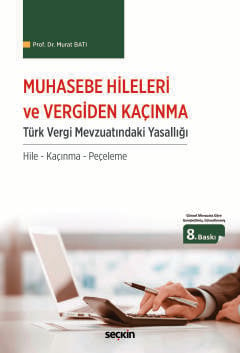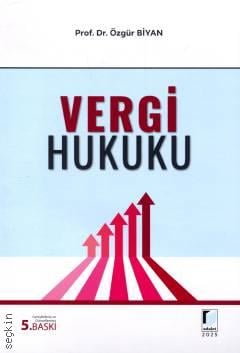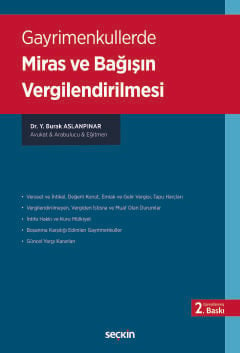
Turkish Tax Law(s)
5. Baskı,
Şubat 2020
Kitabın Detayları
Dili:
İngilizce
Ebat:
16x24
Sayfa Sayısı:
391
Kitabın Fiyatı:
465,00₺
Temin süresi 2-3 gündür.
Kitabın Açıklaması
There have been a number of literatures written on tax law and Turkish Tax System; but concerning these fields, we find only few studies produced in English language mainly in 90s, most of which now remain outdated due to often amendments made in the tax legislation upon the dynamic nature of the tax system. Under these circumstances, a need for such a study in English, which covers the tax law and Turkish Tax System by also reflecting on the up-to-date legislation, has arisen for the private sector representatives doing business with the foreigners and the state authorities negotiating with the foreign countries as well as the academicians/students who delivers/receives the tax courses in English in the schools.
To satisfy this need, following my first book named Tax Law and Turkish Tax System published in May 2009 and the second book named Taxation in Turkey published in January 2011, this updated and enhanced book in English has been produced on the basis of a text which compiles the examined Turkish literature on the subject and the tax legislation and the relevant explanatory guidelines issued by the Presidency of Revenue Administration. Accordingly, this study does not intend to bring a new approach to the tax lawTurkish Tax System; however it aims at presenting a book in English, which contains concise information gathered from various notable studies, legislation and guidelines written up to now, to the use of all interested parties.
In the first part, named "Tax Law", of this study, the book called "Vergi Hukuku ve Türk Vergi Sistemi (Ders Notları)" by A. Işık, H. Yıldız, T. Gürdal, N. Altun, N. Karaca, F. Aygen and T. Peran (produced in 2004) is highly benefited from as the main source. In the second part, named "Turkish Tax System", the legislation and guidelines published by Presidency of Revenue Administration have been used to a great extent. The text produced in this way have been introduced as notes during the courses that I have been personally giving in the Universities of Bilkent and METU, and finally matured by the feedback of students.
Furthermore, with a view to enlighten the Turkish meaning of the terminology used in this study, a glossary section is included too.
I wish that this book, like the previous ones, will be useful to both the interested practitioners and academicians.
Kitabın Konu Başlıkları
Tax Law
Turkish Tax System
Kitapla İlgili Kategoriler
Yorumlar
Hakkımızda
|
Uluslararası Yayınevi Belgesi|
Kaynakça Dosyası|
Kişisel Verilerin Korunması |
Üyelik|
Siparişlerim|
İade Politikası|
İletişim


